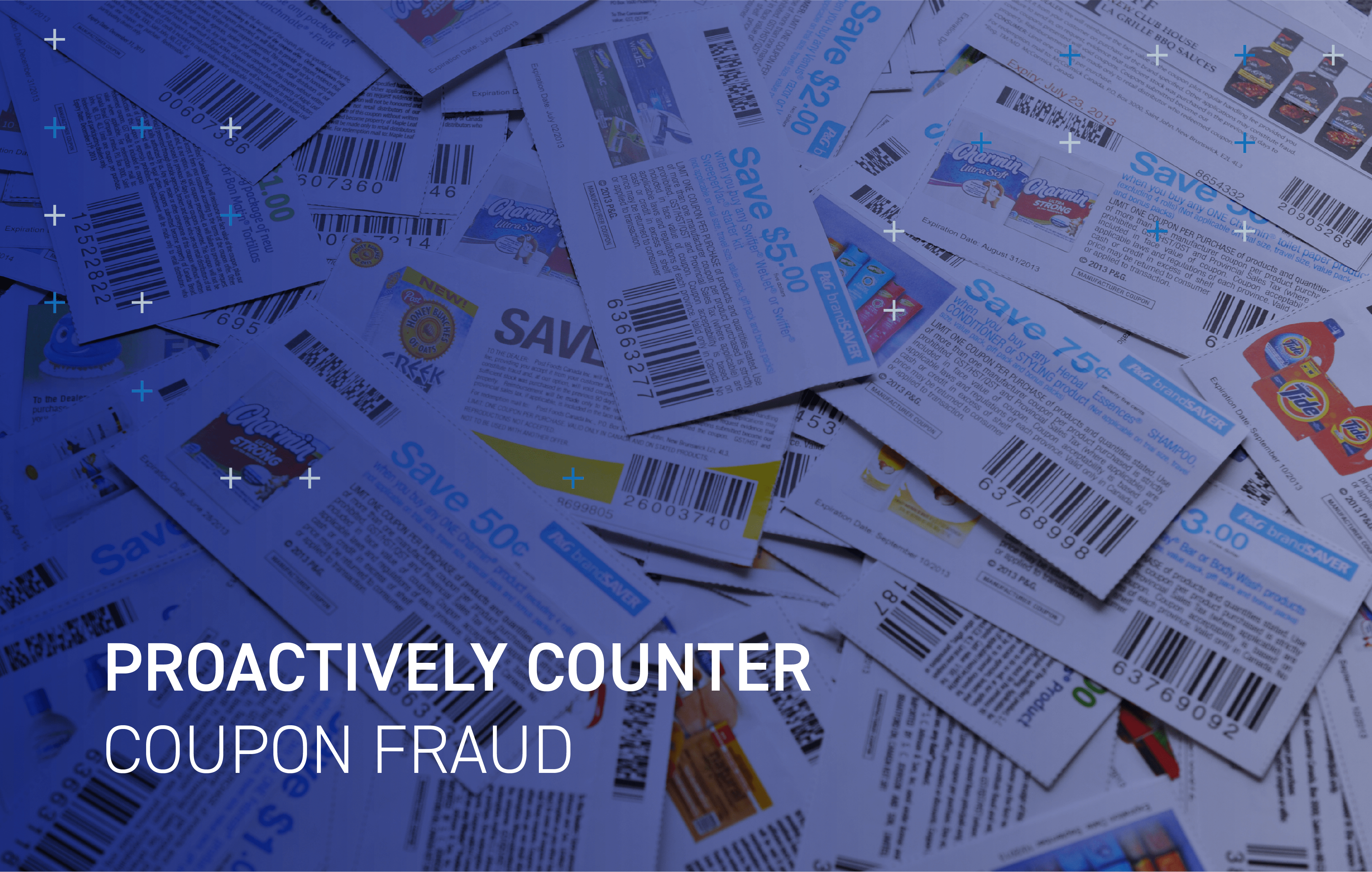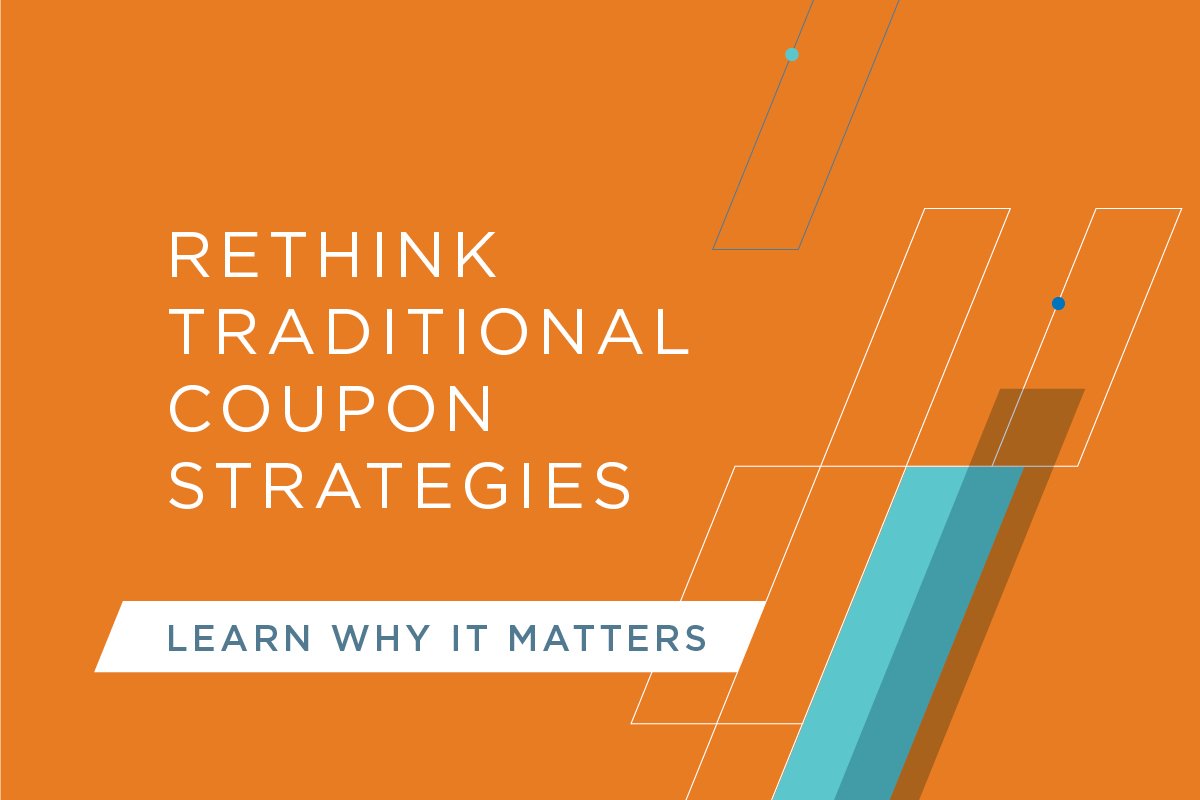Summary
- Fraud has been, and always will be, a challenge that has to be faced by the coupon industry.
- By pursuing a smart strategy for countering coupon fraud, trading partners have an opportunity to minimize its impact while continuing to benefit from the unique advantages coupons provide.
- Here, we’ll discuss the main tenets of a smart strategy.
News sources announced that a husband and wife from Virginia Beach had been accused of operating an online counterfeit coupon scheme that defrauded retailers and brands out of more than $31 million.1 Our organization was proud to contribute data, analysis, and tools to support the efforts of law enforcement in bringing this case to a successful close.
While justice may have been served in the end, what wasn’t just was the more than $31 million in losses that retailers and manufacturers suffered as a result of this scheme.
While nobody truly knows the actual dollars lost annually, it is important to acknowledge that coupon fraud is an incessant problem. Like money, coupons and other discount incentives bring real value to consumers. And whenever money is involved, there will always be attempts to beat the system.
It’s not just the persistence of coupon fraud that is a concern. As the technology and controls to combat fraud continue to evolve, we continue to see would-be fraudsters becoming increasingly more sophisticated. It’s a never-ending competition in which advances on one side get countered by advances on the other.
In fact, the concept of coupon fraud has now penetrated the popular psyche to such an extent that Hollywood is jumping on board with the upcoming blockbuster, “Queenpins.” The comedy, starring Kristen Bell and Vince Vaughn, is based on the true story of one of the largest counterfeit coupon scams in history.
So, what can be done about the problem?
Vericast has previously highlighted a variety of specific actions that manufacturers and retailers can take to minimize their exposure to coupon fraud and counterfeit coupons. To provide more context for those tactics, I thought it would be helpful take a step back and look at the main tenets of a smart strategy for countering coupon fraud.
Actively confront the problem
In difficult situations, our fight-or-flight instinct can take over. It may feel like the right move is to try reducing exposure to coupon fraud by scaling back paper couponing efforts (i.e., the flight response). But following that instinct would be akin to trying to avoid a leaky roof by abandoning the house.
Here’s why side-stepping the issue is not the right solution:
- Scaling back or eliminating paper coupons carries its own set of costs. Paper coupons are an incredibly valuable tactic for retailers and manufacturers, and walking away doesn’t make sense over the long term. In scaling back on paper couponing, the marketer is limiting use of a uniquely effective tool for inspiring consumer action. And that can carry costs for the marketer’s brands.
- Side-stepping the problem doesn’t guarantee you’ll escape it. Different forms of advertising and incentives are vulnerable to different forms of fraud. In other words, shifting from paper couponing to some other form of advertising or incentives opens up its own can of fraud worms.
Like any other maintenance problem, the only viable way to minimize exposure to fraud — whether it’s tied to paper coupons or not — is to actively defend against it. That’s why manufacturers and retailers need to allocate time and budget toward actively combatting fraud and counterfeit coupons.
Focus on prevention
After a coupon has been fraudulently redeemed, somebody — whether it’s the manufacturer or the retailer — must incur the liability. But, by preventing fraudulent redemption before it can happen, both trading partners can avoid the associated liabilities while still reaping all the benefits of this important marketing tool.
To illustrate the potential power of preventive efforts, we have developed dynamic data validation services that make it easy for participating manufacturers to supply participating retailers with a current listing of all the valid offers they have in circulation, as well as a current listing of all counterfeit offers that are known to be in circulation. By leveraging this data at the point of sale, trading partners have managed to dramatically reduce the number of counterfeit coupons that get redeemed. In fact, a study of participating manufacturers found that, on average, they were able to decrease their counterfeit coupon submissions from just one retailer by more than 89% over time.
Leverage advanced data and analytics to support rapid recognition and remediation
Even the best preventive efforts will not be 100% foolproof. Some coupons will get fraudulently redeemed. Some counterfeit coupons will make it into the system. When that happens, it’s important to be able to “plug the holes” quickly.
That’s where data and analytics come into play. Vericast has continued to invest in expanding the range of data and analytics we offer to our manufacturer and retailer clients. That has involved expanding both the types of data we collect and analyze on behalf of our customers, as well as expanding the ways we slice and dice the data to provide an increasingly granular view of each client’s redemption activity. By providing better information, we are empowering trading partners to more rapidly recognize and remediate fraudulent redemption before it gets too far out of hand.
Be collaborative
There are a number of steps that manufacturers and retailers can take individually to help control coupon fraud. But when trading partners coordinate efforts with each other and with their coupon audit and settlement providers, the results can be especially impactful.
Beyond our data validation services highlighted earlier, a great example of a collaborative opportunity to mitigate fraud would be to expand coupon purchase validation at the point of sale. For this opportunity to work, the manufacturer must depend on the retailer’s willingness to perform the necessary validation at the point of sale. And the retailer must depend on the manufacturer’s willingness to supply complete and accurate Family Code data in a timely manner. But, when both trading partners do their part, they can vastly minimize opportunities for coupons to be used to buy the wrong products.
Outlook for coupon fraud
We should all be skeptical of any outlook that is overly optimistic or overly pessimistic.
As we’ve already seen, would-be fraudsters are both highly persistent and highly inventive at coming up with new ways to sidestep evolving controls. While we can manage fraud and manage it effectively, it would be naively dangerous to suggest that coupon fraud will ever completely disappear.
On the other hand, it is also misleading to suggest that coupon fraud is some sort of out-of-control, runaway problem. Yes, it’s a serious and persistent problem. But, our industry continues to advance the analytics, technology, and controls that are being deployed to counter fraud. And, those advances are making a significant and measurable impact.
What is even more encouraging is that collaborative efforts between trading partners are gaining momentum in the market. By being among the first to bring a data validation solution to market — specifically data highlighting all valid offers that a manufacturer has in circulation — Vericast and our participating customers have demonstrated how much trading partners can accomplish when they work together (e.g., an 89%+ decrease in counterfeit coupon submissions from just one retailer). We are now seeing demand for such collaborative solutions expand more broadly throughout the market.
Coupon use represents cash, and whenever money is involved, fraud has always been an issue — enough of an issue to gain Hollywood notoriety from time to time. But, by pursuing a smart strategy for countering coupon fraud, trading partners have an opportunity to minimize its impact while continuing to benefit from the unique advantages coupons provide for inspiring consumer action. That’s why trading partners should commit to actively managing the problem of coupon fraud in a collaborative manner that emphasizes prevention. As a secondary line of defense, a smart strategy should incorporate advanced data and analytics that support rapid recognition and remediation of fraudulent redemption.



